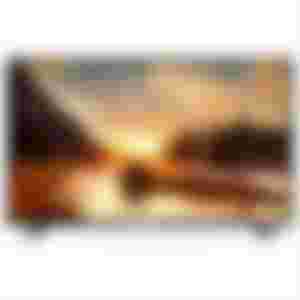There is always an evolution in the field of visuals, whether in terms of software or hardware, and with this development every day a new visual display technology or at least an old technology development appears, so that there is a great competitor in this field, and it has been evident in recent days this great development in technologies Visual display, but it did not conquer the market significantly for one reason ... which is the very high price that is characterized by the new products of international companies such as Samsung and LG, but the most widespread technologies in the field of display so far, especially in TV screens, are the LCD and LED technology, and we will now explain in detail each technology Separately.
1- LCD screens

LCD technology has many unexpected advantages: - LCD TVs are very light and thin as well, and the thickness of the LCD TV screen ranges between 12 cm and 5 cm. And these screens do not emit any harmful electromagnetic emissions. The quality of the images resulting from the LCD screens is much better than the old traditional screens, which are known as CRT screens, which is an abbreviation for Cathode Ray Tube. LCD screens reduce electricity consumption.
However, the LCD does not generate any light by itself. The light used is manufactured separately with the TV set. At the back of the screen is a group of fluorescent light tubes with millions of tiny holes placed in the form of a grid that controls the passage of light and blocks it according to the scene.
Its name as LCD comes from an abbreviation of the word "Liquid crystal display", meaning liquid crystal display, and works on CCFE lighting. It is an abbreviation for Cold Cathode FluorescentLamps, which means cold fluorescent lamp. It also has the advantages of brightness, color saturation and white color.
As for the disadvantages of this screen, it has a problem in BACKLIGHT BLEEDING, which means backlight leakage, the weak black color in it and its depth and saturation, weak response time and poor viewing angle, and it has a weak life compared to LED screens.
2- LED screens

LED screens do not use any fluorescent light source. They are the same light bulbs, which are what the TV relies on to project images and display them on the screen. This is the essential difference between the two types.
There is more than one lighting mode in the LED screens. As the fluorescent lights are always installed behind the screen. Whereas, the LEDs that emit light in LED screens are either installed at the back of the screen or around its edges.
All the different lighting profiles in LED screens ensure much thinner thicknesses than LCD screens. Also, the quality of images in LED screens is better than that of LCD screens. In addition to this technology used in LED screens reduces electricity consumption by up to 30% compared to LCD screens.
Its name is LED, short for Light-Emitting Diode, which means light-emitting diode and works on LED lighting, and there are several types of LED screens. There are screens that contain IPS PANEL-TN PANEL -VA PANEL technology. Certainly, IPS PANEL technology is the best for its color accuracy and its approach to nature And the excellent viewing angle is 178 degrees.
One of the most important features of this type is the depth of the black color, clear side vision, low energy consumption, thinness and speed of response, and good backlight, as for its problems, there is some leakage in the back light and there may be a blur in the black color.


LED has been misused by marketing departments. The screens you are referring to are LCD screens with LED backlighting. While removal of the CFL component is beneficial, they still have all of the other drawbacks of LCD screens. Actual LED screens are used in signage and were possibly already in use for signage prior to this marketing nonsense. In these screens, each pixel is an LED or group of LEDs that can transmit various colors in order to create an image. There are also OLED screens, which are amazing, but may have a shorter life than traditional LCD screens. These are used in some high-end computer monitor and TV applications. There may eventually be micro-LED screens, too, which might provide the best of both worlds. In the meantime, marketing departments continue to try to keep the masses confused. For instance, a QLED screen is NOT an OLED screen or any other kind of LED screen, it is an LED backlit LCD screen with a confusing patented name involving technologies to enhance the LCD performance.